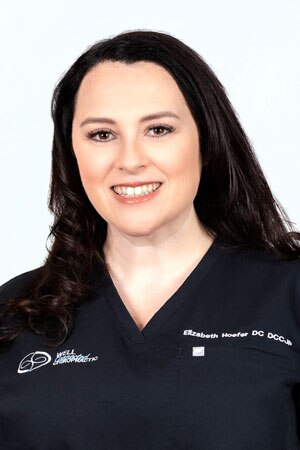6 Ways Chiropractors Can Build a Strong Professional Referral Network
Looking for more referral sources for your chiropractic practice? Learn how to build relationships with doctors in your area so you can attract new patients and bolster your business growth.
By Gina LaGuardia
Managing Editor
Posted Jul 18, 2025 - 5 min read

Medical doctors are key decision-makers when it comes to their patients’ health. Building strong relationships with them can help impact your practice. After all, when physicians understand the value and efficacy of chiropractic care, they can become a vital source of new patients.
So, exactly how do you create a strong doctor referral network? Here are six strategies that can help you build professional relationships with M.D.s and increase patient referrals.
1. Become the “Go-To” Expert
Who is your ideal patient? Is your focus on pediatrics, pregnancy, headaches, disc herniations, thoracic outlet syndrome (TOS) or sciatica? Think about the patients you want to serve or the specific condition you want to be known for and work toward becoming the go-to chiropractor for that specialty area in your community.

Dr. Elizabeth S. Hoefer of Well Connected Chiropractic in Mission Viejo, California, for example, has built a reputation around caring for patients with complex neurological issues. “I’ve gravitated toward patients with vestibular issues, migraines, vertigo and other neurological complications,” she explains. (She completed a three-year, 300-hour diplomate in cranial cervical junction procedures.) “I can do a correction that doesn't involve the twisting, the popping or the cracking, and it makes a really incredible neurological change with a lot less input,” she explains.
When you focus on a specialty that aligns with your skills and passion, you can not only deliver better outcomes, you can also become the provider physicians and patients seek out first.
2. Lead With Curiosity
To build meaningful referral relationships, start by showing genuine interest in your colleagues’ work. “When it comes to reaching out to another physician, it’s about being more interested than interesting.” She chooses to focus on what other providers do and how they help people, rather than talk about herself, Dr. Hoefer explains.
“I learn about what they’re doing and start referring patients to them. Then, my patients tell them, ‘Dr. Hoefer referred me here.’” That, she says, builds the relationship naturally.
3. Share Your Knowledge
Most medical doctors don’t fully understand what chiropractors do, so it’s helpful to educate them and build awareness around the science and outcomes of your work.
That’s where the passionate sharing of information comes in, says Dr. Hoefer. “When we provide doctors with understandable, concise clinical data about our shared patients — like outcomes or progress — it creates credibility. They begin to realize our care isn't anecdotal; it's measurable.”
You may also want to consider physician referral marketing strategies such as a monthly email newsletter that helps keep your practice top-of-mind, she suggests. “I write for a local magazine. I have a podcast that I produce. I share content on Instagram and my other social media pages.”
Dr. Hoefer also emphasizes the need to evolve with the times. “Having the ability to meet people where they are — on TikTok or Instagram, for example — really changes the game in being able to share information in bite-sized chunks,” she says. “It’s OK to be innovative and not do things the same way we once did. Being adaptable is the key to growing your ability to communicate.”
4. Seize Doctor Networking Opportunities
Take advantage of opportunities to meet medical doctors and other health and wellness providers face-to-face, whether at conferences, community events or local continuing education classes. Remember to be genuine, ask engaging questions and let your passion for client care shine through.
“When I attend networking events, I lead with curiosity. I ask other providers what kind of patients light them up, and then I really listen,” says Dr. Hoefer. “That sets the stage for meaningful collaboration, not just a business card exchange.”
5. Master the Art of Engagement
After initial interactions, a thoughtful follow-up can help solidify relationships. Instead of asking, ‘Do you have any questions?’ — which shuts many people down, explains Dr. Hoefer — ask instead, ‘Is there anything that surprised you?’ or ‘Is there anything you see differently now?’ “That opens people up and creates what I call ‘harvesting collective genius,’ where everyone learns from each other."
She also recommends learning the names of all the practice associates you might come in contact with so that when you meet them, you can correctly address them by name. “You can use the comment section of your tracking sheet to record additional information like a follow-up meeting or other important details.”
6. Make It Easy for Patients to Pay
As you start to bring in new patients through doctor referrals, it's important to have a system in place that streamlines the financing process for patients, especially if you don’t accept insurance, the patient doesn’t have insurance or insurance doesn’t cover the recommended therapy.
It’s all part of improving the patient financial experience. “The CareCredit health and wellness credit card is a tool we use to help people get the desired outcome they want — to feel good in their bodies,” Hoefer says. “What does it say about you when you can play with your grandkids at the park, sit at your desk and work without pain or come home from work and not fight with your spouse because you’re not overwhelmed?”
The Power of Connection
Dr. Hoefer’s philosophy is simple: When you come from a place of adding value, you’ll be rewarded. “People trust me because they know I’m not in it for myself; I’m here to help them grow. When I came here from Iowa 17 years ago, my motivation was to unify our profession. I’ve done that by referring, and by helping people feel safe, seen and heard.”
Offer Flexible Financing at Your Practice
If you are looking for a way to connect your patients or clients with flexible financing that empowers them to pay for the care they want and need, consider offering the CareCredit credit card as a financing solution. CareCredit allows cardholders to pay for out-of-pocket health and wellness expenses over time while helping enhance the payments process for your practice or business.
When you accept CareCredit, patients or clients can see if they prequalify with no impact to their credit score, and those who apply, if approved, can take advantage of special financing on qualifying purchases.* Additionally, you will be paid directly within two business days.
Learn more about the CareCredit credit card as a financing solution or start the provider enrollment process by filling out this form.
Healthcare payment and financing solution
The CareCredit health and wellness credit card helps improve the payment experience for patients and clients, and your financial performance.
Get StartedReady to help more patients and clients get the care they want and need?
Get StartedReady to help more patients and clients get the care they want and need?
Get Started*Subject to credit approval.
The information, opinions and recommendations expressed in the article are for informational purposes only. Information has been obtained from sources generally believed to be reliable. However, because of the possibility of human or mechanical error by our sources, or any other, Synchrony and any of its affiliates, including CareCredit, (collectively, “Synchrony”) does not provide any warranty as to the accuracy, adequacy, or completeness of any information for its intended purpose or any results obtained from the use of such information. All statements and opinions in this article are the sole opinions of the author. The data presented in the article was current as of the time of writing. Please consult with your individual advisors with respect to any information presented.
© 2025 Synchrony Bank.




